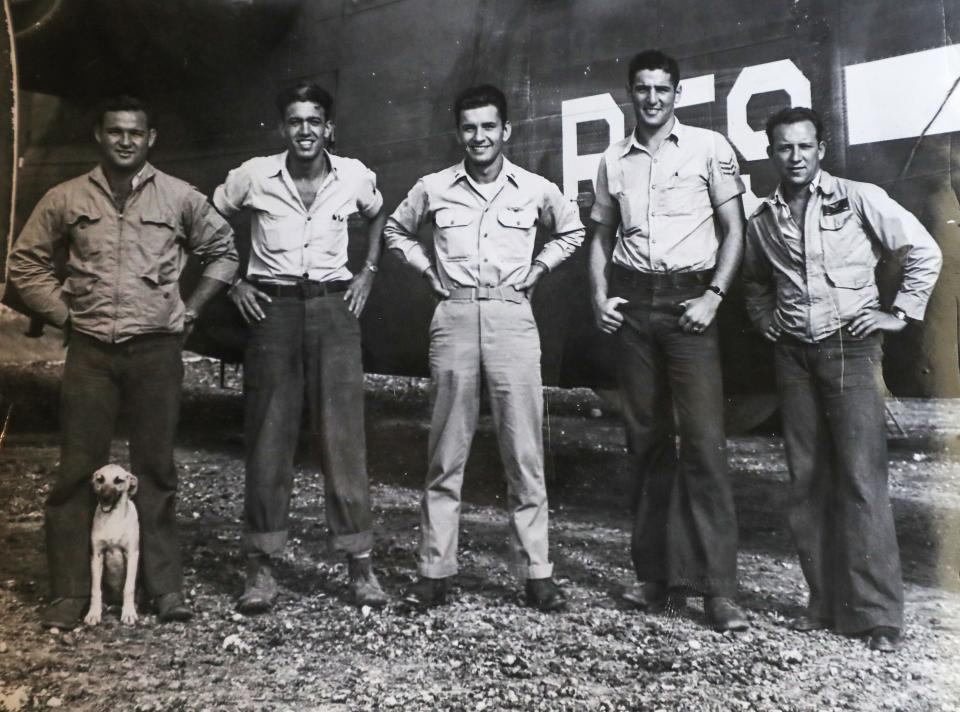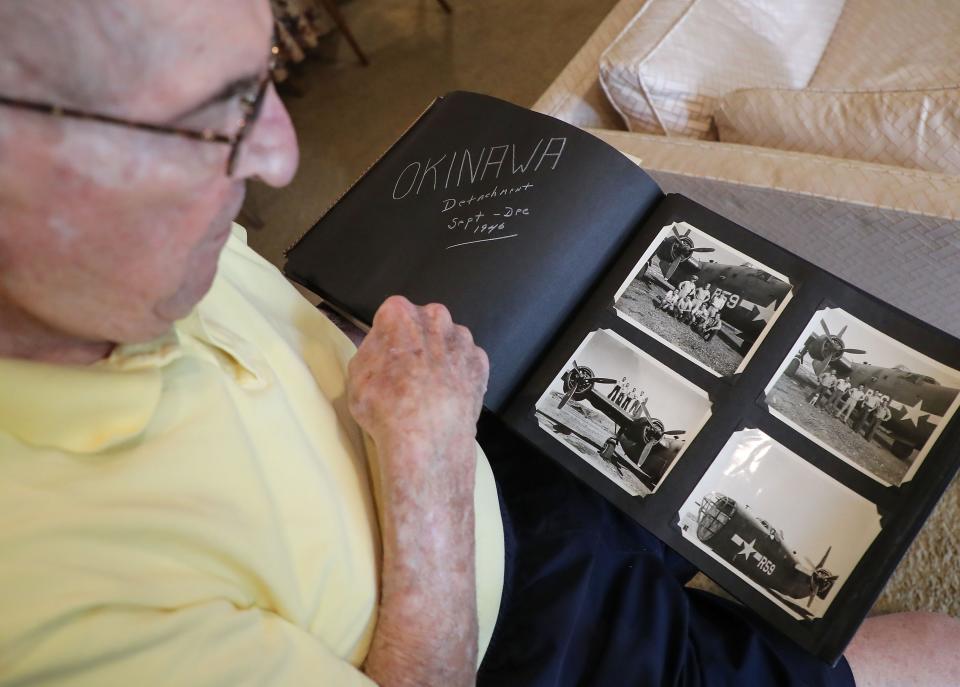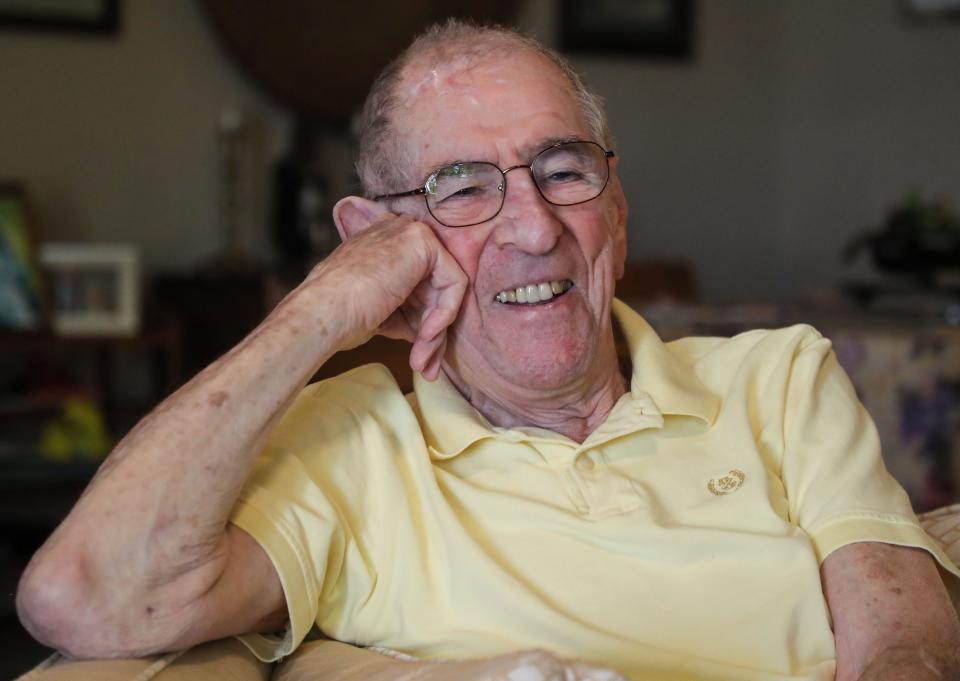WWII veteran, Palm Desert resident, joined military after learning of Pearl Harbor attack

It's been 80 years since hundreds of Japanese fighter planes descended on Pearl Harbor, killing more than 2,400 Americans.
Richard Sirinsky, 97, still remembers hearing the news on the radio — and the strong yearning to do something about it.
"I was very upset about it, but I couldn't really do anything," Sirinsky told The Desert Sun last week. "I was still in high school at the time."
The 17-year-old was eager to join the military but, as one of the youngest in his class, he wasn't eligible yet.
"Some of my friends who were older had already joined," Sirinsky said, referencing how several 18-year-old students had been drafted into the U.S. Army.
After graduating early from his Philadelphia high school, Sirinsky worked different jobs for a year, waiting for his next birthday when he could enlist. His parents weren't happy about it, but didn't object.
Preferring the sea to muddy trenches, Sirinsky joined the U.S. Navy in 1942 and became an aviation radioman.

At the edges of war
Sirinsky was sent to nearby Lakehurst, New Jersey for Naval training and was assigned to a blimp squadron.
It was the same Naval Air Station where the Hindenburg, a German passenger airship, caught fire in 1937, killing 36 of the 62 people aboard. The last survivor of the crash died in 2019.
Next, Sirinsky was sent to Southern California. That squadron escorted freighters up and down the coast. In 1945, he was preparing to join the fight in Europe.
"I actually was on the East Coast loading aboard freighters and transport ships to go to London ... but the war (in Europe) ended."
Related: Attic size of a queen bed served as home for Holocaust survivor, family hiding from the Nazis
More:Temple Isaiah celebrates Hanukkah amid COVID-19
Adolf Hitler killed himself on April 30 and, within days, Germany surrendered, according to the United States Holocaust Memorial Museum. Victory in Europe Day was proclaimed on May 8. The fight in the Pacific, however, was ongoing.
Sirinsky became a rear-gunner for a dive bomb squadron and headed for Japan.

"When Japan surrendered, I was on the carrier Lexington, which went into Tokyo Bay and our Marine detachment went ashore and disabled the guns so that we could come in without any danger," he said. "The war was over and we worked out of there for about three months."
Japan surrendered Sept. 2, 1945, officially ending World War II.
Sirinsky enjoyed being in the military and re-enlisted for another two years, serving in a weather squadron and witnessing the detonation of the atom bomb.
"We did the weather recon for the Bikini bomb test for about six months," he said.
Nuclear weapon testing was conducted by the U.S. at Bikini Atoll in the Marshall Islands between 1946 and 1958 — the first period of the Cold War.
From the archive: Palm Desert veteran witnessed atomic bomb tests in Navy
"They had a bunch of disabled Navy ships in there to see what effect a bomb explosion would have under water and above," he said. During above water testing, Sirinsky and his crew took the lower altitudes and an Air Force team took the higher altitudes.
"We did the weather recon prior to the test to make sure that the atomic particles didn't attack any livable spaces," he added. He remembers seeing the big plume going up into the air.
"It's quite interesting to see the results of a bomb test," Sirinsky said.
No regrets: Life after the military
Sirinsky would've made a career of the military but, in early 1947, he met Esther while on leave for his best friend's wedding. The two danced — he doesn't remember to which song — and he told her: "I'm gonna marry you."
Three months later, he did.
"I got out and lived a good life outside the Navy," he said. Asked how he felt about war, Sirinsky said: "I don't feel good about people getting killed — if we didn't have wars, what a great world we'd have."
For local stories that matter, subscribe today.
Sirinsky went back to school and graduated with a degree in engineering. He then went into the private sector, where he first took a broadcasting job in his native Philadelphia. Later, he became a service engineer, then a sales manager for the electronics company Ampex, which was based in California. Japanese companies were entering the market but, Sirinsky said, "the only thing we were at war with was keeping them from getting our business."
In the meantime, he said, he lost touch with all of his buddies from the Navy.

They'd made plans to go to Hollywood together to meet a "big shot" relative of one of the guys, but it never happened.
"Most of the people I dealt with are either dispersed or dead," Sirinsky said. "In the Navy, you get transferred and you lose touch with people."
Nearly 220,000 World War II veterans are estimated to still be living, according to data from the U.S. Department of Veterans Affairs. there are an additional 20,000 veterans still living who also served during the Korean and Vietnam wars.
The man considered to be the oldest survivor of the attack on Pearl Harbor, another veteran, died earlier this year at 103. The last known Pearl Harbor survivor living in the Coachella Valley died in 2020.

Sirinsky and his wife, residents of Segovia in Palm Desert, have been married for 74 years. They have two children, four grandchildren and three great-grandchildren.
"I'm very happy with my life all the way through," he said. "I've never regretted what I had to do."
Are you a veteran?: Veterans Services available in Riverside County and in Coachella Valley
More: WWII nurse Doris Howard, 101, returns to Palm Springs, where her career began 78 years ago
Maria Sestito covers issues of aging in the Coachella Valley. She is also a Report for America corps member. Follow her on Twitter @RiaSestito, on Instagram @RiaSestito_Reporter or email her at maria.sestito@desertsun.com.
This article originally appeared on Palm Springs Desert Sun: WWII veteran, Palm Desert resident, joined military after learning of Pearl Harbor attack

